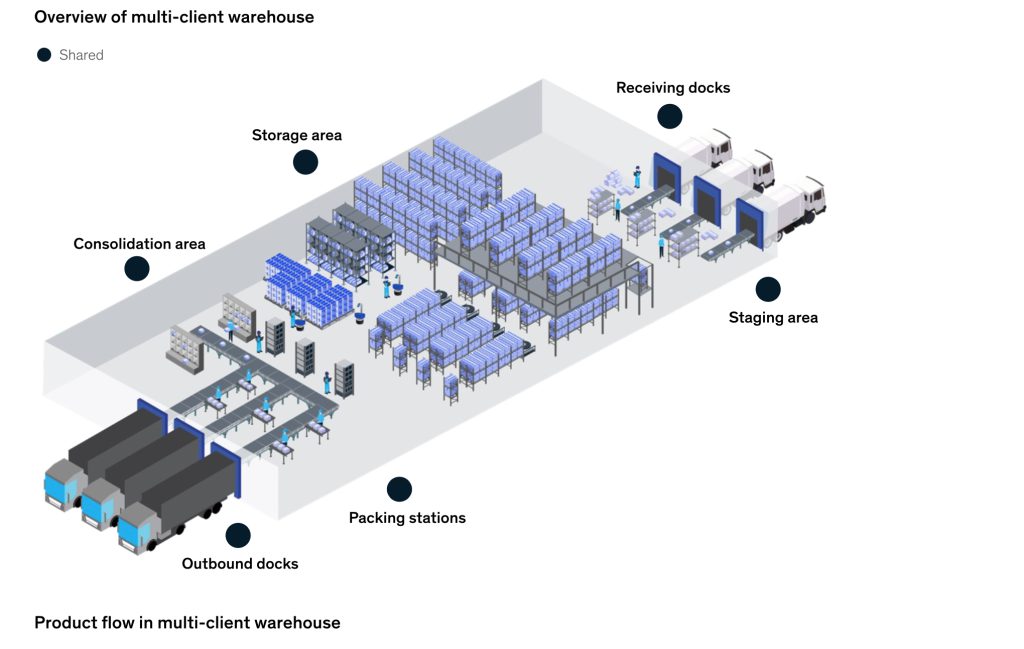Online shopping has seen consistent growth over the last few decades, and the effects of COVID-19 have amplified this trend, with consumers around the world doing more of their shopping online. Online shopping will likely remain a large part of consumer behavior. The rapid growth in e-commerce is beginning to put a strain on third party logistics (3PL) companies as they grapple with complex customer demands, rising costs and increased competition. However, successfully implementing and unlocking the benefits of this model requires changes to service offerings, commercial structure, warehouse operations and technology. Provision WMS people have the skill and expertise to help implement and design your warehouse operations model and the technology to give any 3PL a competitive advantage.
The E-Commerce landscape is putting pressure on the traditional business model
Consumers are shopping online for a greater number of product categories than ever before, putting pressure on 3PL’s to meet consumer demand across product categories and requiring greater flexibility in warehouse inventory, picking and packing. At the same time, consumers are expecting ever faster delivery times (delivery speeds is a key differentiator). 25 percent of consumers are willing to pay a premium for same-day delivery. That said, with the current pressure on wages and the increased final-mile costs, logistics costs
may increase to 15 to 25 percent of e-commerce revenues soon. 3PLs must now compete with end-to-end solutions offering click-to-door services. Provision WMS SaaS based warehouse management solution gives any 3PL the needed technology to be the differentiator.
How can 3PLs remain competitive in this increasingly challenging environment?
Fulfillment operations range from a dedicated single-client model, where operations are customized to client requirements, to the fully integrated multi-client model. A SaaS based WMS integration within a multi-client fulfillment model will provide ways for 3PLs to remain competitive in the e-commerce space. Lessons can be drawn from the way major e-retailers organize their multi-client warehouses. Technology and automation are deployed wherever possible, and activities and resources are shared across clients-leading to significant cost savings. Provision WMS SaaS based software allows for multiple operational flows. Automated integrated multi-client fulfillment operations could help 3PLs address the dual pressure of rising e-trailer demands and costs.
Overview of multi-client warehouse

Product flow in multi-client warehouse
3PLs looking to adopt a multi-client model should be aware that successful implementing one requires a shift in mindset and concrete changes to their business model. Taking the leap to a multiple client model may require new offerings and pricing strategies, as well as revamping operations and processes. But there are measures that 3PLs can take to overcome these challenges. ProvisionWMS people have the knowledge and expertise to guide your 3PL through the challenges.
How can a multi-client model be successfully implemented?
Successfully implementing a multi-client approach may require changes to a 3PLs commercial structure and operations, and would likely require new technology to support front and back-end operations. In terms of service offerings, 3PLs may need to develop a portfolio of standard services that customers can mix and match to create a solution that best meets their requirements, while also maintaining profitable operations for 3PLs. To do so they need to create a dedicated e-commerce service function that stays abreast of market changes and responds to clients’ needs. This dedicated business unit could sit at the intersection of client focus, business strategy, and operations. 3PLs would need to adjust warehousing and operations to make the most efficient use of available resources such as space and labor. They may need new tools to handle the added complexity of co-mingled goods. They may also look to adopt flexible and modular.
What it takes to implement a flexible technology system?


